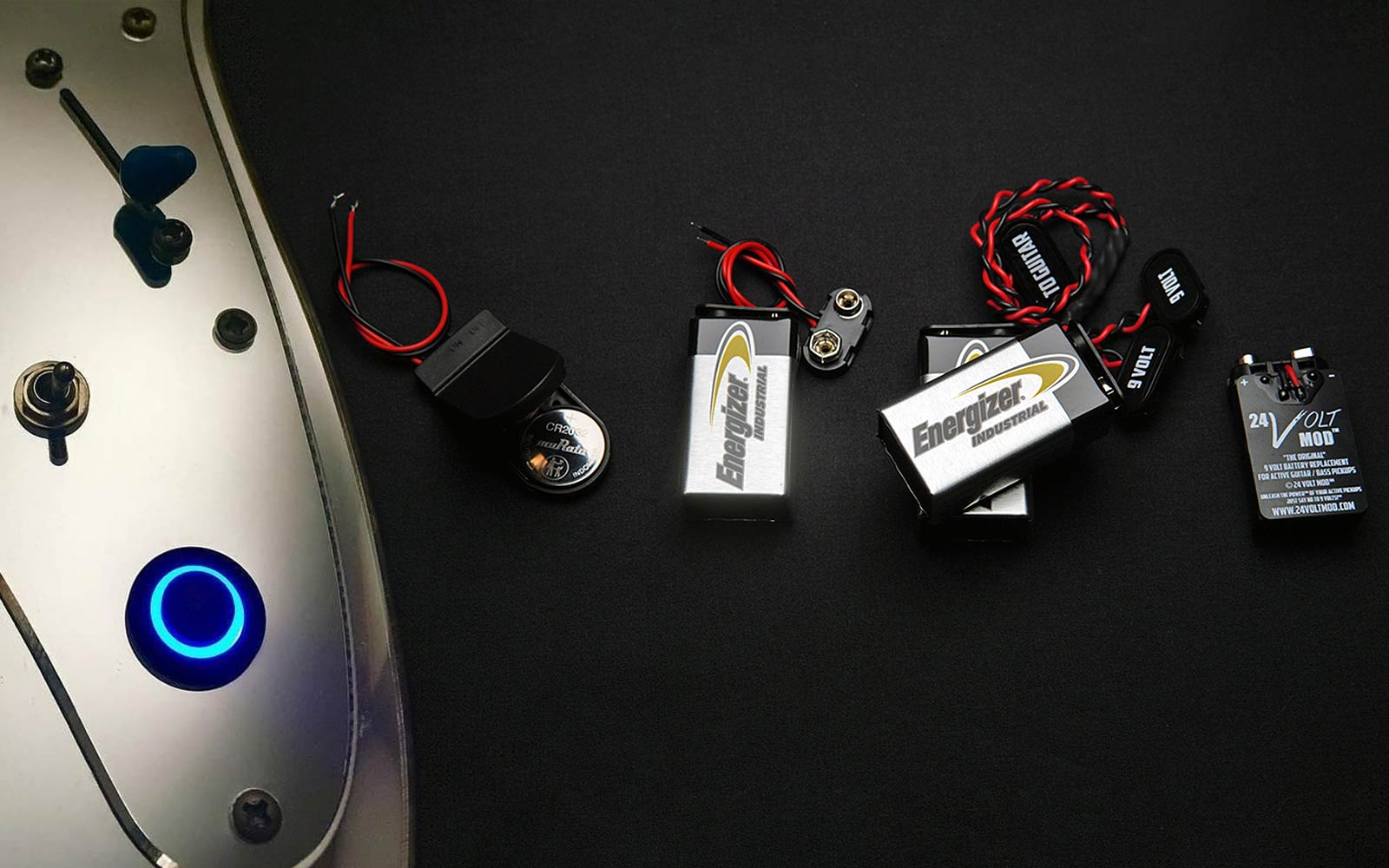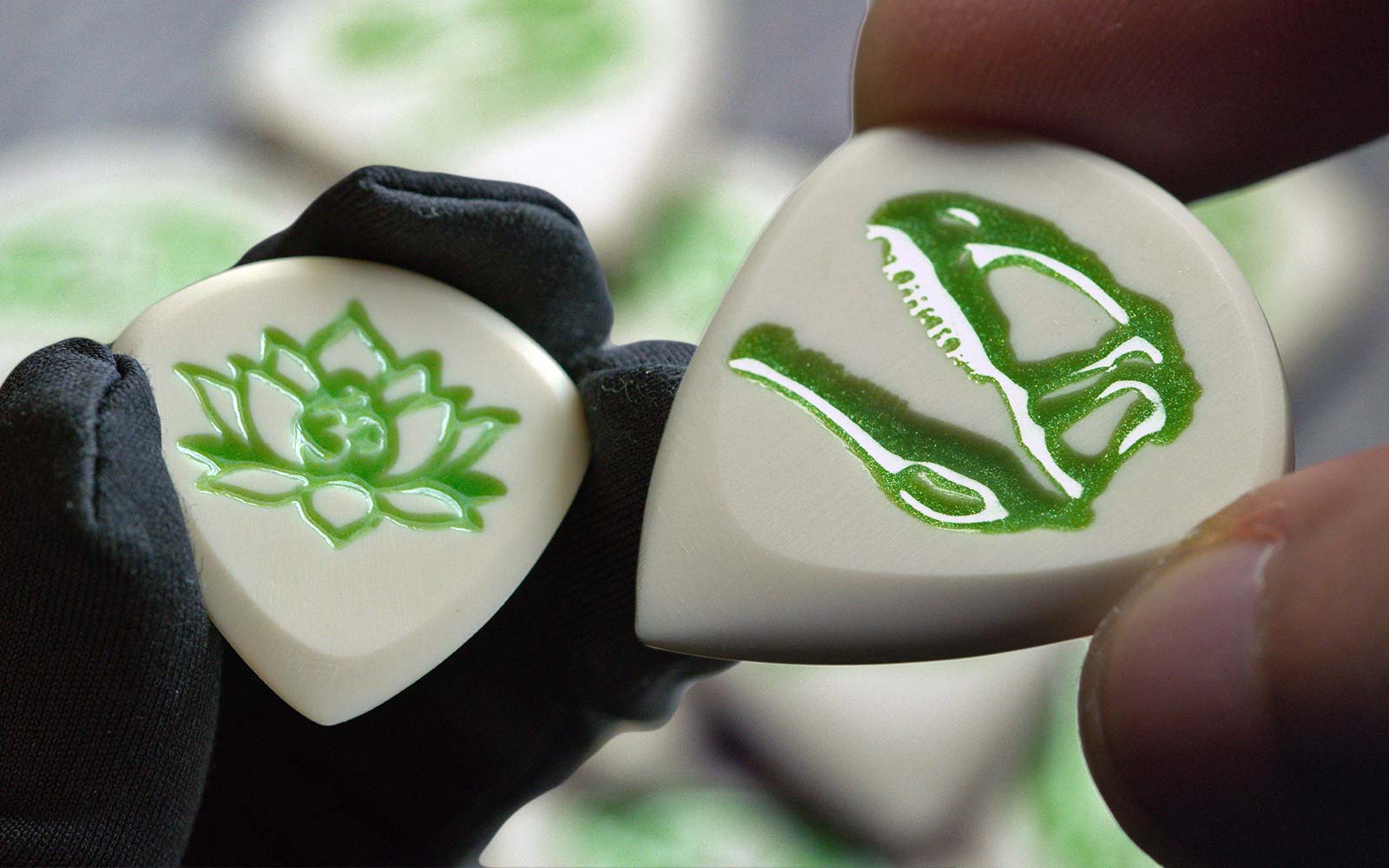How To Use A Guitar Pick: What Every Beginner Should Know
by Alex Rodea June 13, 2024
Learning to play the guitar can be an exciting and rewarding experience, but with so many different techniques & tools to master, it can also be a bit overwhelming, especially for beginners. One of the most fundamental topics is learning how to use guitar picks.
In this blog, we'll cover all the basics about guitar picks, including how to hold them correctly, how to choose the right pick for your playing style, & answer some of the most frequently asked questions you might have on the topic.

Should Beginners Use Guitar Picks
For the most part, Yes! Beginners should use guitar picks. Although they are not necessary, and there’s many pro guitarists who don’t use them, they can help beginners develop proper technique & improve their playing.
Not only do picks provide a consistent sound and make it easier to play complex rhythms or fast passages, they can turn you into a better musician. By learning to play with both your fingers & a pick, you’ll be able to switch between acoustic, classical, and electric guitars.
Related: Are fingers or a pick better for bass guitar?
So why should new guitar players choose to use a guitar pick?
Easier to play: Using a guitar pick can make it easier for beginners to play the guitar, especially when it comes to strumming and playing individual notes.
Consistent sound: Using a guitar pick produces a consistent sound, which can help beginners develop their playing skills and improve their timing.
Versatility: Guitar picks come in various shapes, sizes, and thicknesses, making them a versatile tool for different playing styles and genres.
Avoiding finger pain: Playing with your fingers can cause pain and discomfort, especially for beginners. Using a pick can help reduce this discomfort.
On the other hand, beginners may choose not to use guitar picks for the following reasons:
Fingerstyle preference: Some beginners may prefer playing with their fingers, as it allows them more control over the sound and can be used for fingerstyle playing.
Personal preference: Some players may simply prefer not to use a guitar pick and prefer playing without one. Try both methods and see what feels more natural to you.
More complex playing: Some playing styles, such as classical or fingerstyle guitar, may not require the use of a pick & using one might actually hinder your performance.
So if you mainly intend to play a Spanish guitar with nylon strings, a pick is really optional. If you’re playing a steel stringed acoustic or electric guitar though, it doesn’t hurt to add picks to your list of tools. Overall, it will make you a much more versatile musician.
Do You Strum With A Guitar Pick
Strumming with a pick is a technique where the pick is dragged across multiple strings in a downward or upward motion to produce a sound. And while it’s one of the most common uses for a guitar pick, it can do so much more.
In addition to strumming, there are other techniques and styles of playing that involve using a guitar pick. Here are some of them:
Alternate picking: This is a technique where the pick is used to pick each string in an alternating up-and-down motion. This technique is often used in faster playing styles, such as rock and metal.
Sweep picking: This is a technique where the pick is used to play multiple strings in a single motion, creating a sweeping effect. This technique is often used in arpeggios and other complex playing styles.
Hybrid picking: This is a technique where the player uses both the pick and fingers to play the guitar. The pick is used to pick certain strings, while the fingers are used to pluck other strings. This technique is often used in country and bluegrass music.
Pinch harmonics: This is a technique where the player uses the pick to produce a harmonic by lightly touching the string with the thumb of the picking hand immediately after picking the string with the pick. This technique is often used in rock and metal playing styles.
In summary, while strumming is the most common use of a guitar pick, there are many other techniques and styles of playing to explore. Experimenting with different techniques can help you develop your playing skills and find your own style of playing.
What Is The Right Way To Use A Guitar Pick
While there are no hard rules on how to hold a pick, here are some practical steps that can help ensure proper pick usage:
Hold the pick correctly: Hold the pick between your thumb and index finger, with the pointed end facing down towards the strings. The pick should be held firmly but not too tightly, allowing for flexibility and movement. We have a whole article on how to hold a guitar pick here which breaks it down into 2 methods.
Angle the pick correctly: Angle the pick slightly towards the headstock of the guitar, between 45 and 90 degrees. This angle can affect how easily the pick glides across the strings, whereas playing perpendicular to the strings can cause the pick to get stuck at times.
Practice proper pick technique: Whether you're strumming or picking individual strings, practice proper technique to ensure accuracy and consistency. This may involve experimenting with different picking motions and practicing at slower speeds before increasing tempo.
Know when to change picks: Over time, picks can wear down or become damaged, affecting their performance. If the playing point is becoming dull, is losing its shape, & it’s affecting your performance, then it’s time for a new one.
Choose the right pick: Pick thickness and material can affect how the pick feels in your hand and how it interacts with the strings. We recommend experimenting with different picks to find the one that feels comfortable and allows you to perform your best.
How Do You Choose A Guitar Pick
Choosing a guitar pick is a subjective process, meaning it’s up to personal preference and playing style. What works for one guitarist may not work for another. Some guitarists prefer thick picks for their rigidity and bright tone, while others prefer thin picks for their flexibility and softer sound. Similarly, some guitarists prefer picks made from nylon, while others prefer those made from celluloid or metal.
When choosing a guitar pick, it's important to consider factors such as thickness, material, shape, texture, & the style of music you wish to play. However, ultimately, the best guitar pick for you is the one that feels good & allows you to play your best. It may take some experimentation to find the right pick, and you may find that you prefer different picks for different playing styles or genres. Here’s a related article on how to choose a pick for acoustic guitar.
Key factors to consider when choosing the right guitar pick:
Thickness: Guitar picks come in various thicknesses, ranging from thin, to thick, and then ginormous. The thickness of a pick can affect its flexibility and how it interacts with the strings. Thinner picks are more flexible and produce a snappier sound, while thicker picks are rigid and produce a fuller tone.
Material: Guitar picks can be made from a variety of materials, including plastics, acrylic, nylon, celluloid, metal & much more. Each material can produce a unique sound and feel. For example, metal picks are heavy, rigid, and produce a rich tone, but you have to play very deliberately. Something like celluloid will be much lighter and produce a warm sound if it’s a thick pick, or snappy if it’s a lighter gauge.
Shape: Guitar picks come in various shapes, such as standard, triangle, and jazz. The shape of a pick can affect how it interacts with the strings and how it feels in your hand. For example, a triangle pick may provide more surface area for gripping and strumming, while a sharp jazz pick may offer a more precise attack for picking individual notes.
Texture: Some guitar picks have a textured surface, which can provide extra grip and prevent slipping. If you have trouble holding onto your pick, a textured pick may be a good option. There’s also textures on the playing points which can affect the feel of the pick as you pluck individual notes & also change the sound characteristics.
Playing style: Different playing styles may require different types of picks. For example, playing country music would be better with a thin pick made from celluloid or nylon, whereas playing lead guitar in a hard rock band might be better using a jazz pick using a durable material.
Overall, the right guitar pick for you will depend on your personal preference and playing style. Experiment with different picks to find the one for you. Remember, there’s no hard rule saying you have to stick to just one. You might just use different picks for different songs or playing styles.
Frequently Asked Questions
Should you hold a guitar pick tight or loose?
When it comes to holding a guitar pick, the ideal amount of tension is subjective and depends on the individual player's style or preference. Some players prefer to hold the pick tightly for more control and precision, while others prefer to hold it loosely for a more relaxed and fluid strumming style.
That being said, there are some general guidelines that may help you determine the right amount of tension to use when holding a guitar pick:
For precise picking or intricate fingerpicking, it may be beneficial to hold the pick more tightly. This allows for more control over the pick's movement and can help prevent it from slipping.
For strumming or playing with a more relaxed style, a looser grip may be more appropriate. This allows for a more fluid motion and can help produce a softer, more natural sound.
Ultimately, the best way to determine the ideal amount of tension to use when holding a guitar pick is through practice and experimentation. Try holding the pick in different ways and see how it affects your playing. Pay attention to how the pick feels in your hand and how it affects your tone and technique. With practice, you'll be able to find the right balance of tension that works best for you.
Should I hold my guitar pick with 2 or 3 fingers?
The choice of holding a guitar pick with two or three fingers depends on personal preference and comfort. Using two fingers to hold the pick is most common and offers flexibility for both precise picking & fluid strumming. Holding the pick with three fingers provides more stability and control, making it useful for heavy and aggressive playing styles. Overall, 2 fingers is the norm, but if 3 feels more natural, stick with it.
Should you strum chords with a pick?
While guitar picks are perfectly suitable for strumming, some people prefer to play with their fingers and you can strum guitar chords either way. Give each a try and see what sounds & works best for you.
Iron Age Guitar Pick Recommendations
While there’s plenty of cost effective pick options on the market, maybe you are looking for something a bit more unique, with character, and craftsmanship.
Here’s a couple of options from our shop to consider. The first being a variety pack so you can experiment with various thicknesses & shapes. If you want to try out handmade guitar picks, the acrylic spearheads are a good start with several options to choose from. Finally, we have the faux ivory Parthenon picks which come in several shapes with a thickness that can be customized to your preference.
Delrin Variety Pack
Acrylic Spearhead Guitar Pick
Parthenon Collection (Faux Ivory Picks)
Also in Iron Age || General Blog

Black Fingertips From Playing Guitar? What’s Really Going On
by Alex Rodea September 25, 2025
Noticed your fingertips turning black after playing guitar? From string chemistry to fretboard dyes and even the environment you play in, here’s what really causes it — and how to keep your hands (and gear) cleaner.

Killswitch LED & Voltage Compatibility Guide
by Alex Rodea July 31, 2025
Wondering how to safely power an LED killswitch in your guitar? This guide breaks down exactly which batteries and resistors work best for each setup, based on years of real-world testing—so you can upgrade confidently and avoid costly mistakes...

The 3 Best Engraved Guitar Picks to Personalize Your Playing Experience
by Alex Rodea March 20, 2025
Engraved guitar picks add both style and function, offering extra grip and a personal touch with custom initials, logos, or messages. Whether you're looking for a unique gift or a pick that stands out, check out our top choices and grab your first engraving for free with code...

Guitar Jack Not Working? Here's A Few Easy Steps To Fix Crackles & Pops
by Alex Rodea March 19, 2025

Mono vs Stereo Jacks: Key Differences & How to Wire Them
by Alex Rodea March 06, 2025

The Best Acoustic Guitar Picks: Tips & Considerations For Newbies
by Alex Rodea March 06, 2025
+Iron Age Blogs
For the latest news & announcements, check out our News & Updates Blog
For tips, tricks, & other informative articles, check out our General Guitar Blog
Become a newsletter subscriber to get the latest info on new blog articles, receive exclusive promo codes, and be notified of upcoming giveaways!
+Recent Articles
-
Black Fingertips From Playing Guitar? What’s Really Going On
September 25, 2025
-
Killswitch LED & Voltage Compatibility Guide
July 31, 2025
-
The 3 Best Engraved Guitar Picks to Personalize Your Playing Experience
March 20, 2025
-
Guitar Jack Not Working? Here's A Few Easy Steps To Fix Crackles & Pops
March 19, 2025
-
Mono vs Stereo Jacks: Key Differences & How to Wire Them
March 06, 2025
-
The Best Acoustic Guitar Picks: Tips & Considerations For Newbies
March 06, 2025
-
The Best Guitar Picks For Bass: A Guide To Help You Choose
March 05, 2025
-
What is a Fret Wrap, String Muter, or String Dampener?
March 05, 2025
-
Guitar String Names & How To Memorize Them
March 05, 2025
-
How To Make Wooden Guitar Picks: Ebony Spearhead
March 05, 2025
+Affiliate Notice
Iron Age is a participant in the Amazon Services LLC Associates Program, an affiliate advertising program designed to provide a way for websites to earn advertising revenues by advertising and linking to Amazon.com
Iron Age Guitar Accessories
226 Douglas Way St
San Antonio, TX 78210
USA
⚔️
“Quality is never an accident. It is always the result of high intention, sincere effort, intelligent direction and skillful execution. It represents the wise choice of many alternatives.”
~William A. Foster (MOH Recipient, 1945)
Sign up for the Iron Age newsletter to Save 15% on your 1st order, plus get exclusive offers, product updates, and early access to giveaways!
© 2025 Iron Age Guitar Accessories.
Est 2015.





Alex Rodea
Author
Founder of Iron Age, my guitar journey began in 2006, fueling a passion for crafting premium guitar accessories that embody timeless style & innovative expression. Through my Stay Tuned Guitar site I also share tips & info for new guitarists, offering everything from beginner tutorials to DIY tips & general music knowledge.